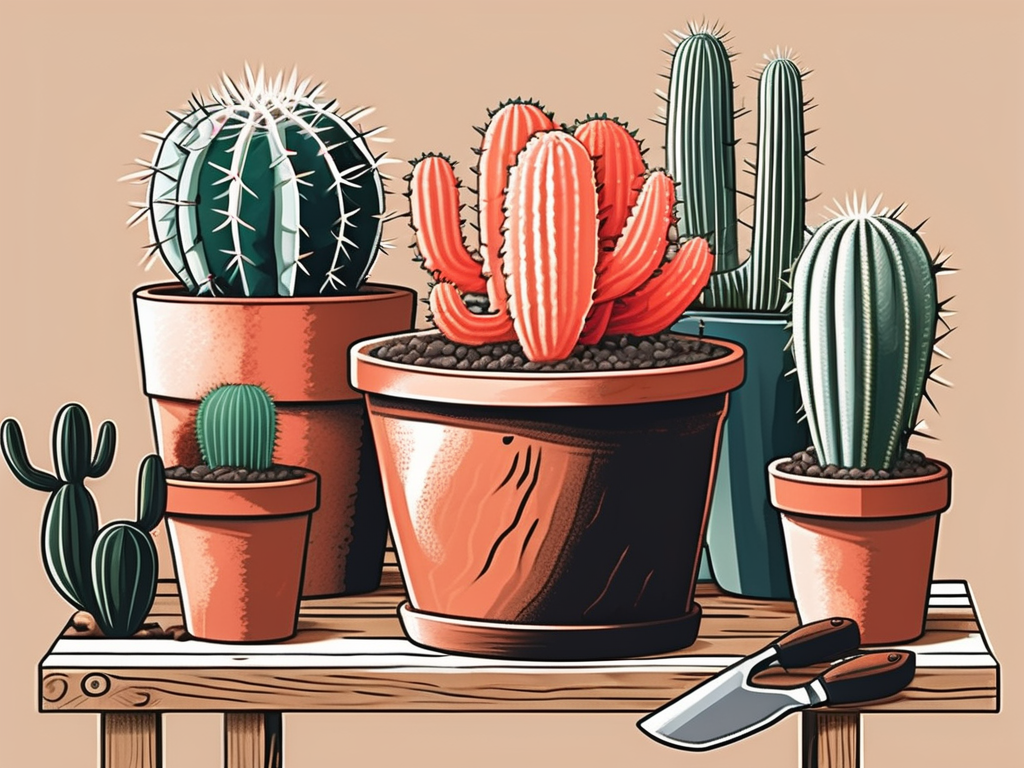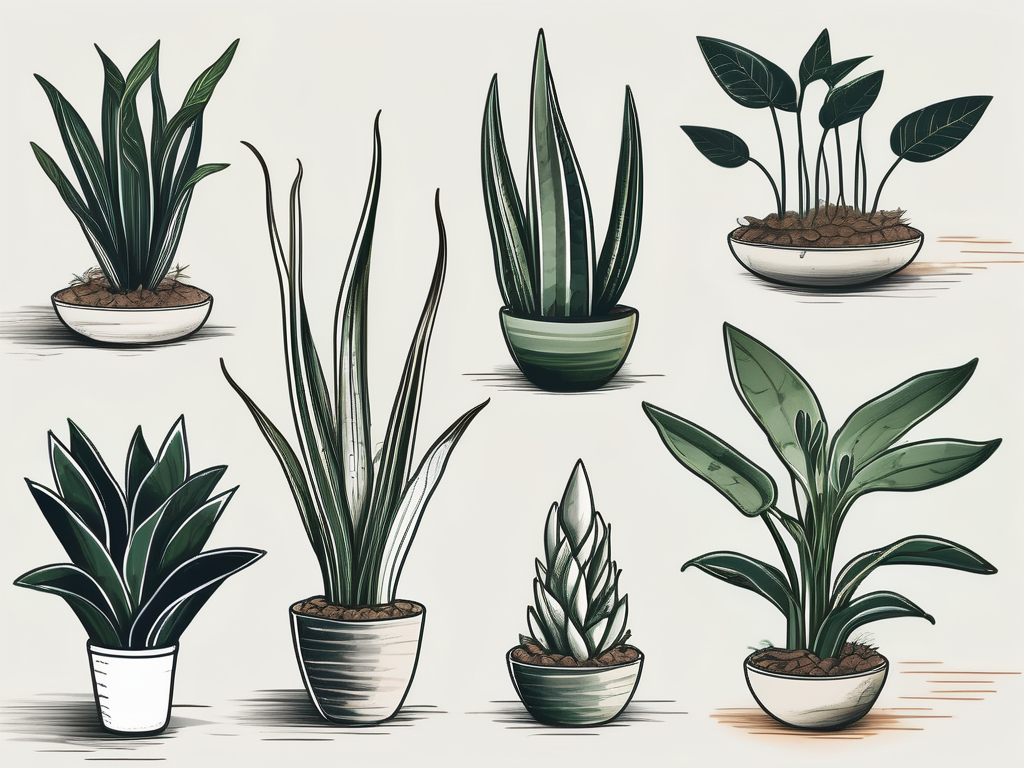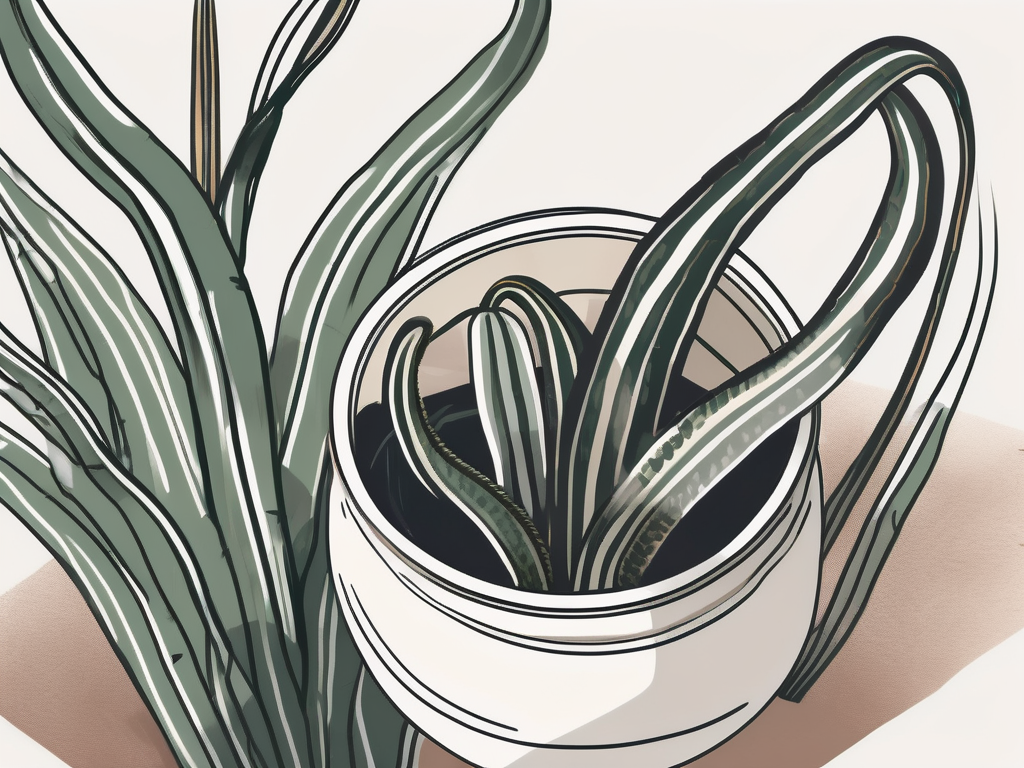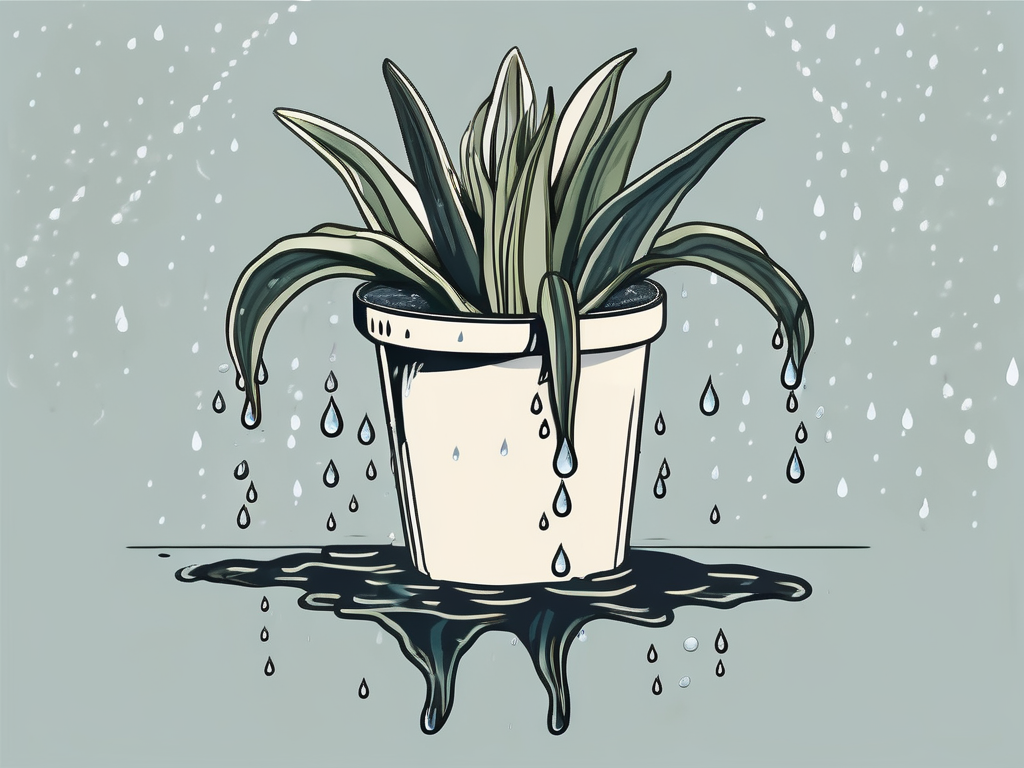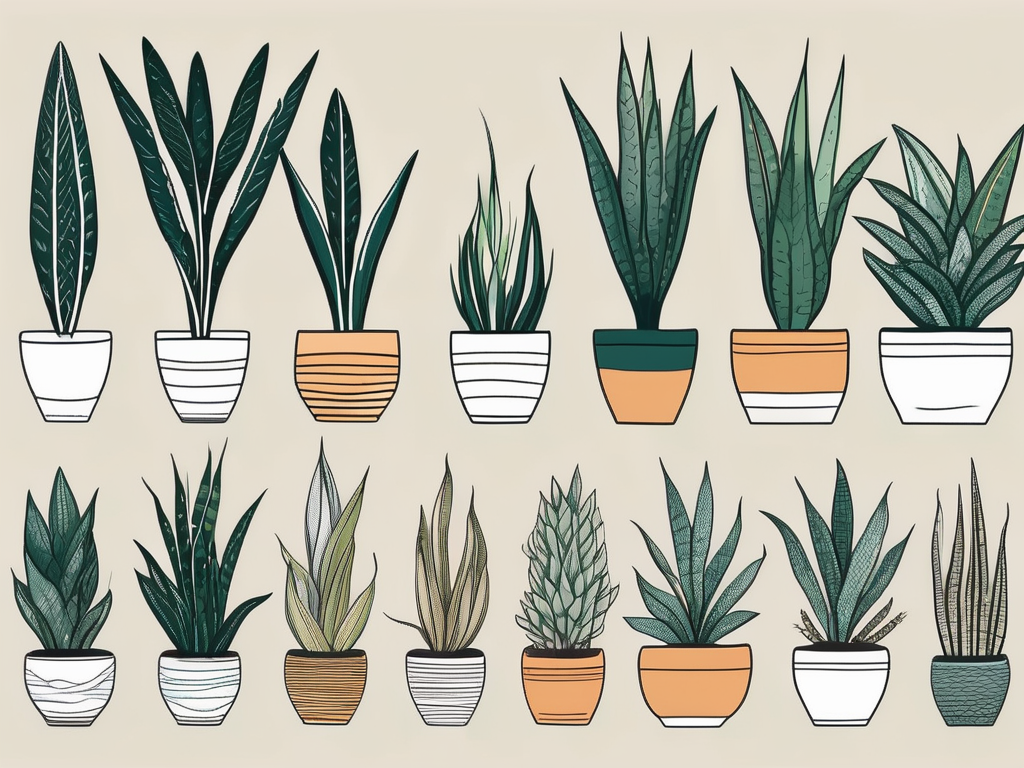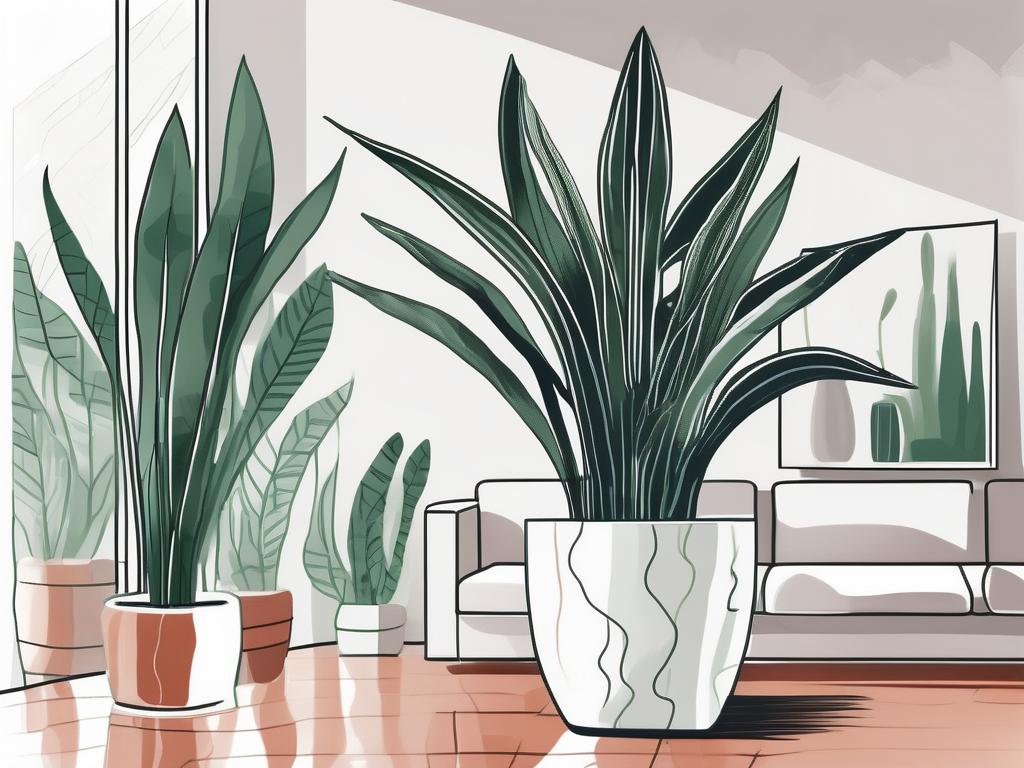
When it comes to houseplants, the Black Coral Snake Plant is a real showstopper. With its dramatic dark green leaves streaked with lighter gray-green bands, it easily becomes a focal point in any room. Plus, it's got that fantastic reputation for being nearly indestructible, which is perfect for anyone who's ever worried about their less-than-green thumb.
In this article, we're going to look at everything you need to know to keep your Black Coral Snake Plant thriving. From lighting and watering needs to dealing with those pesky pests and even styling tips for your home, we've got you covered. So, let's roll up our sleeves and get into the details of caring for this striking plant.
1. Understanding the Black Coral Snake Plant
Let's start by getting to know this plant a little better. The Black Coral Snake Plant is a cultivar of the Sansevieria trifasciata, also commonly known as the snake plant or mother-in-law's tongue. It's native to West Africa, and over the years, it's become a favorite among plant lovers for its unique appearance and low-maintenance nature.
The Black Coral variant is particularly striking, thanks to its dark green foliage with lighter horizontal stripes. These leaves grow upright and can reach up to three feet tall, making it a great choice for adding vertical interest to your home. But aside from its good looks, this plant is also known for its air-purifying qualities. It helps remove toxins like formaldehyde and benzene from the air, which is a great bonus for any indoor space.
One of the reasons why the Black Coral Snake Plant is so hardy is its drought tolerance. It stores water in its thick, succulent-like leaves, allowing it to survive periods of neglect. However, just because it's tough doesn't mean it doesn't have preferences. Understanding these can help your plant not just survive but thrive.
2. Light Requirements
Lighting is vital for the Black Coral Snake Plant, but it doesn't need to be complicated. These plants are incredibly adaptable and can tolerate a range of light conditions. That said, they do have their sweet spots.
Ideally, your Black Coral Snake Plant will enjoy bright, indirect light. This means a spot near a window where the sun's rays aren't directly hitting it. Direct sunlight can scorch the leaves, leaving unsightly marks. If your home doesn't have a lot of natural light, don't worry. This plant can also handle low-light conditions, although its growth might slow down a bit.
Here's a simple guideline to follow:
- Bright, indirect light: Helps your plant grow steadily and maintain vibrant leaf colors.
- Low light: Slows growth and may result in less vibrant foliage, but the plant will still survive.
- Direct sunlight: Best avoided to prevent leaf burn.
In terms of placement, think about windowsills, shelves near windows, or even on the floor if you have tall windows. If you're using artificial lighting, fluorescent or LED lights can also work wonders. Just make sure they're not too close to the plant.
3. Watering the Black Coral Snake Plant
Watering is where many plant people get tripped up, but with the Black Coral Snake Plant, it's pretty straightforward. These plants are succulent-like and prefer to dry out between waterings. Overwatering is the most common mistake and can lead to root rot, which is something you definitely want to avoid.
Here's a simple watering routine to follow:
- Check the soil: Before reaching for the watering can, check if the top two inches of soil are completely dry. You can use your finger or a moisture meter for this.
- Water thoroughly: When it's time to water, do so thoroughly until you see water draining from the bottom of the pot. This ensures the roots get enough hydration.
- Drain excess water: Always ensure your pot has drainage holes and never let your plant sit in water. Dump any excess water from the saucer after watering.
- Adjust for seasons: During the growing season (spring and summer), you might water every 2-3 weeks. In the fall and winter, reduce this to once a month or less, depending on your indoor environment.
Remember, it's better to underwater than overwater with snake plants. They can handle drought, but too much water is a quick way to trouble.
4. Potting and Soil Needs
Choosing the right soil and pot for your Black Coral Snake Plant is another piece of the puzzle. These plants prefer a well-draining soil mix, similar to what you'd use for cacti and succulents. The key is to allow water to pass through easily, preventing any soggy conditions that could lead to root rot.
Here’s how to set your plant up for success:
- Soil mix: Go for a commercial cactus or succulent mix, or make your own by mixing regular potting soil with sand or perlite for added drainage.
- Pot choice: Use a pot with drainage holes. Terracotta pots are excellent because they allow excess moisture to evaporate through their porous material.
- Repotting: Snake plants don't mind being a bit root-bound, so repotting every 2-3 years should suffice. When repotting, choose a pot that's only slightly larger than the current one to avoid too much soil, which can retain excess moisture.
When you do repot, be gentle with the roots and try not to disturb them too much. Simply remove the plant from its current pot, shake off excess soil, and place it in the new pot with fresh soil.
5. Fertilizing for Growth
Fertilizing isn't a major requirement for the Black Coral Snake Plant, but it can give your plant a little boost, especially during the growing season. Over-fertilizing, however, can cause more harm than good, leading to salt buildup in the soil.
Here's a simple fertilizing schedule:
- Frequency: Fertilize once a month during the growing season (spring and summer).
- Type: Use a balanced liquid houseplant fertilizer diluted to half strength. Cactus fertilizers can also be a good option.
- Rest period: Skip fertilizing in the fall and winter, when the plant's growth naturally slows down.
Always follow the instructions on your fertilizer package and remember that less is more. If you're unsure, start with less and observe how your plant responds.
6. Managing Pests and Problems
Even though the Black Coral Snake Plant is pretty resilient, it can sometimes attract pests like mealybugs and spider mites. Fortunately, these issues are usually easy to manage with a bit of attention.
Here's how to keep pests at bay:
- Regular checks: Inspect your plant regularly, especially the undersides of leaves, for any signs of pests.
- Quick action: If you spot pests, isolate the plant to prevent spreading and treat it with a gentle insecticidal soap or neem oil.
- Cleaning: Wiping leaves with a damp cloth can help keep them dust-free and less attractive to pests.
Beyond pests, keep an eye out for signs of overwatering, such as yellowing leaves or mushy stems. Adjust your watering routine if you notice these symptoms, and make sure your plant's soil and pot allow for proper drainage.
7. Styling Tips for Your Home
The Black Coral Snake Plant isn't just about low maintenance; it's also a fantastic decor element. Its bold, architectural form can complement a variety of interior styles, from modern to bohemian.
Here are a few ways to style your plant:
- Standalone statement: Place your snake plant in a large, decorative pot and let it stand solo in a corner or by a window.
- Grouped with others: Combine with other plants of varying heights and textures to create an indoor jungle vibe.
- On a plant stand: Elevate your plant to eye level with a stylish plant stand, which can also help with airflow around the plant.
Consider the pot color and material as well, which can tie your plant into the overall aesthetic of your room. Neutral pots blend in, while brightly colored or patterned pots can add a pop of color.
8. Propagating Your Black Coral Snake Plant
If you love your Black Coral Snake Plant and want more of them, the good news is that they're easy to propagate. This can be a fun way to expand your collection or share plants with friends.
Here's a simple propagation method:
- Leaf cuttings: Cut a healthy leaf near the base and let it dry out for a day or two until the cut end is calloused.
- Plant the cutting: Insert the calloused end into a pot with a well-draining soil mix. Keep the soil slightly moist but not wet.
- Be patient: It can take several weeks for roots to form, so patience is key. Once the cutting has rooted, you can care for it like a mature plant.
Propagation is a great way to enjoy the rewarding process of plant parenting and to share the joy with others.
9. Troubleshooting Common Issues
No plant is without its quirks, and the Black Coral Snake Plant is no exception. However, most problems have straightforward solutions, so don't fret if things aren't perfect.
Some common issues include:
- Yellowing leaves: Often a sign of overwatering. Check your soil and adjust your watering routine accordingly.
- Brown tips: Could be due to dry air or underwatering. Consider misting your plant or adjusting your watering schedule.
- Slow growth: This is normal in low-light conditions or during the plant's dormant period in the fall and winter.
Remember, plants are living things with their own rhythms and needs. Observing and adjusting as needed is part of the journey of plant care.
Final Thoughts
Caring for a Black Coral Snake Plant is rewarding and straightforward. With the right light, watering, and occasional check-ins for pests, your plant can thrive and bring beauty to your home for years to come.
At Cafe Planta, we're passionate about helping you succeed in your plant journey. Whether you're looking for new plant additions, care tips, or just want to chat about plants, we're here for you. Feel free to email us, reach out on Instagram, or explore our plant shop to discover a variety of houseplants and accessories. Let's grow together!














